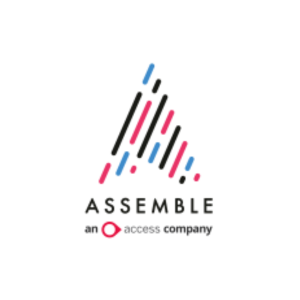Insights
INSIGHTS
All Topics
How to choose a legal structure for your organisation
We look at the four main charity structures and how to decide what’s right for you
Setting up a new charity can be overwhelming. There’s a lot to think about – including deciding on the right legal structure.
So, what is a legal structure? A legal structure is the way your organisation is set up. It defines the rights of your charity. This article will help you to think about the different legal structures and signpost you to further information to help with your decision.
Choosing the right legal structure
The National Council for Voluntary Organisations (NCVO) says it’s important to choose the right legal structure as it will affect how your organisation works. It will affect who will run it, whether it can employ staff, enter into contracts with other organisations, and who will be liable for what your organisation does.
The Resource Centre adds that you should “think carefully about what you actually want your organisation to do”. For example, a small, volunteer-run group may need an informal structure that doesn’t require a lot of work. In this case, you may decide to become an unincorporated association, which you can set up yourself and not register with anyone (if the group’s purpose isn’t solely charitable).
The NCVO says when deciding on a structure, you need to make two big decisions:
- Whether the charity should be governed by trustees only, or whether it should have a wider membership. Some organisations are membership organisations with voting members who elect trustees. Others are governed solely by trustees who are appointed without being elected
- Whether to have an incorporated structure or an unincorporated one. Incorporated means the organisation is separate from those that run it. This means trustees can’t be held accountable if the charity gets into debt
Being incorporated means there are tight regulations and control. An unincorporated organisation doesn’t have a separate legal identity to those who run it, which means a trustee is at risk of losing their personal assets if the organisation can’t cover its liabilities.
Making these decisions will help you to decide which of the four legal structures you should choose for your charity.
Different legal structures
There are four main legal structures for a not-for-profit organisation in the UK:
Charitable Incorporated Organisation (CIO)
This is an incorporated organisation that must register and report to the Charity Commission. You can either set up a foundation CIO, which just has trustees, or you can set up an association CIO if you want a wider membership, including voting members in addition to trustees.
Company Limited by Guarantee
This is a company that doesn’t distribute income to shareholders. All surplus income is reinvested into the company. It’s incorporated and has voting members.
Companies must register with Companies House, which regulates them. A company can be a charity if it meets the legal requirements. This includes directors of a company not being paid.
Unincorporated Association
This is a membership organisation with voting members. It is the easiest and cheapest way for a group to set itself up and is ideal for small groups who don’t have staff or an office.
An organisation with this type of legal structure can be a charity if it has charitable aims. If this is the case and your annual income is over £5,000, you must register with the Charity Commission.
An unincorporated association is not incorporated, so it can’t enter into contracts with others or own property.
Charitable Trust
This is a charity run by trustees. There are no voting members so the trustees are appointed rather than elected. Like an unincorporated association, a charitable trust is not incorporated, so it can’t enter into contracts or own property.
Where to get further support
The Charity Commission has guidance for charities in England and Wales.
The Charity Commission for Northern Ireland has guidance for charities in Northern Ireland.
The Scottish Charity Regulator has guidance for charities in Scotland.
The NCVO has a guide to help you set up your charity.
The NCVO also has a webinar on setting up a legal structure:
The Resource Centre has an online resource to help you choose the right legal structure for your organisation.
What do when you’ve chosen a structure
Once you’ve decided on a structure for your charity, you need to write a governing document. This is a legal document that sets out your charity’s purpose and how it will run. The Charity Commission has information about how to write your governing document.
If you need to change your charity’s legal structure in the future, it is possible. The Charity Commission has further information about how to do this.
Kellie Smith
More on this topic
Recommended Products
Featured Products
Related Videos
Our Events
Charity Digital Academy
Our courses aim, in just three hours, to enhance soft skills and hard skills, boost your knowledge of finance and artificial intelligence, and supercharge your digital capabilities. Check out some of the incredible options by clicking here.


















